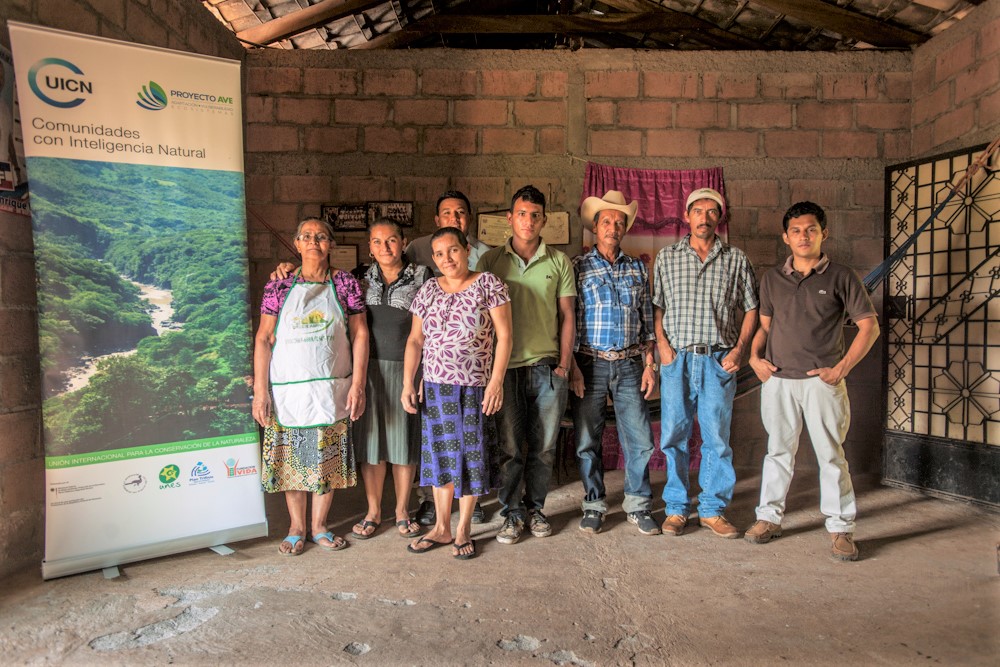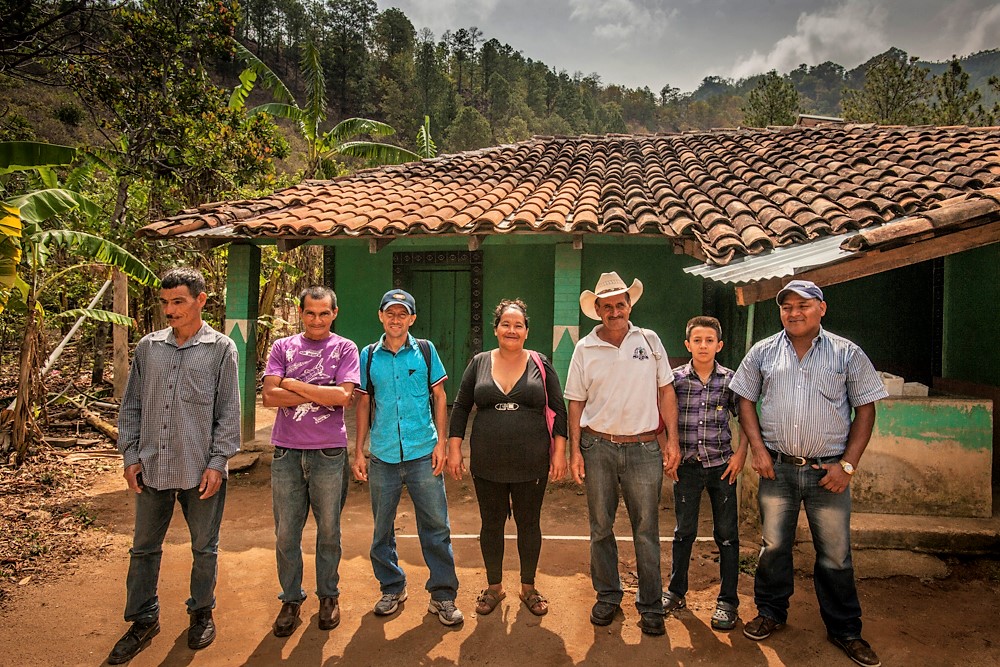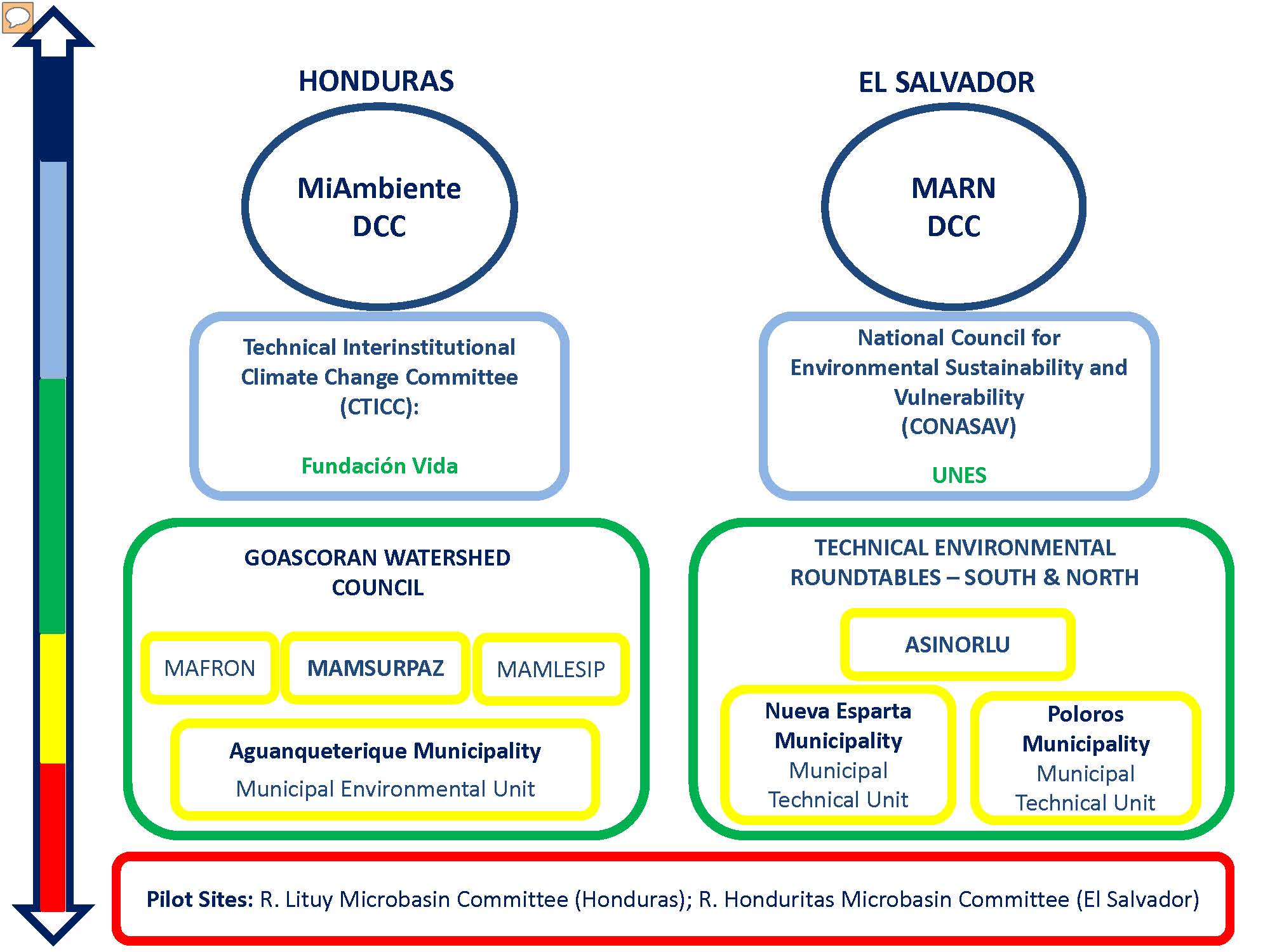



The work in Goascorán targeted several levels of decision-making to reinforce the basin’s governance through the vertical and horizontal articulation of socio-political platforms; all of this in order to achieve a multidimensional (multilevel and multisectoral) governance model for adaptation. At the community level, EbA measures were implemented in the field to improve food and water security. With municipalities, adaptation to climate change was incorporated into Environmental and Municipal Development Plans. At the micro-basin level, two Micro-basin Committees (one on each side of the border) were created as multi-stakeholder governance platforms, receiving training, preparing internal regulations and plans, and enabling wide-ranging advocacy (e.g. civil society, municipalities and municipal commonwealths). At the basin level, in El Salvador, where several Technical Tables operate, two Environmental Technical Tables were established for the north and south of La Union in order to articulate the basin’s shared management, and linkages were sought with the Goascorán River Basin Council that operates on the Honduran side. At the national level, the recent National Adaptation Plan of Honduras comprises the EbA approach, as does the new Regulation of the Honduran Climate Change Law
- Honduras has a legal framework (Water Law) that creates the entities of Basin Councils and Micro-basin Committees, unlike El Salvador. With this, the Micro-basin Committee established in El Salvador, although very functional, lacks legal backing, which prevents it from managing projects and administering funds.
- Significant synergies were achieved with other projects in the Goascorán basin (e.g. BRIDGE and “Nuestra Cuenca Goascorán”), especially in coordinating actions to strengthen basin-wide governance and scaling up the EbA approach.
- To strengthen governance at multiple levels, it is essential to initiate work with grassroots groups (community level) and with existing local governance platforms, such as, for example, Community Development Associations (El Salvador), to then scale-up to higher levels based on the experience acquired and the results achieved.
- The project known as BRIDGE left the following lesson learnt, which is also relevant here: "Water diplomacy does not necessarily follow a straight path. Effective strategies need to incorporate multiple dimensions and a phased approach, interconnecting existing structures and those under construction in the basin."